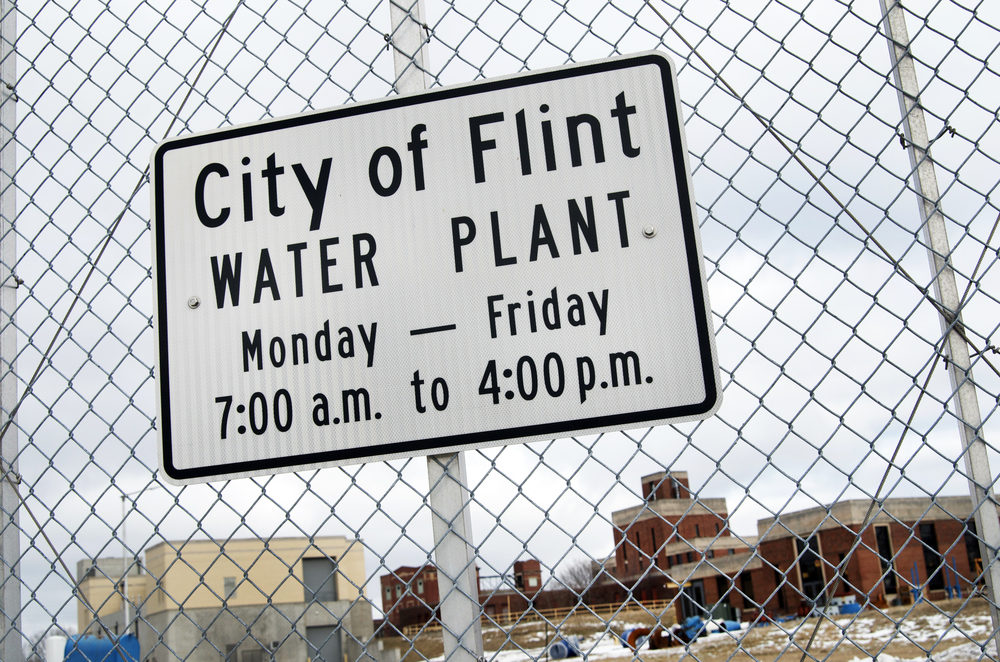Flint Water Problems Investigated For Legionnaire’s Disease Deaths, Links to Miscarriages

Amid evidence that suggests incidence of Legionnaire’s disease in Flint, Michigan were allowed to go unchecked, state and independent investigators are expanding an investigation into the recent Flint water problems that have caused high levels of lead to contaminate drinking water.
According to an investigative report by CNN, the health director of Genesee County, where Flint is located, indicates that the city was the site of one of the worst Legionnaire’s disease outbreaks in U.S. history. That may be due, in part, to efforts by state officials to keep the U.S. Centers for Disease Control and Prevention (CDC) in the dark, Health Director Jim Henry alleges.
Henry said the county health department was prevented from getting help from the CDC by the state, resulting in an outbreak that sickened at least 87 Flint-area residents and killed nine or ten people, depending on who’s counting. In a normal year, Genesee County has about 13 Legionnaires disease cases.

Learn More About
Children diagnosed with lead poisoning after exposure to peeling or chipping lead paint in a rental home may be entitled to financial compensation and benefits.
Learn More About this Lawsuit SEE IF YOU QUALIFY FOR COMPENSATIONThe Detroit News analyzed more than 34,000 pages of emails released by the state, and also determined that state officials rejected help by the CDC and the U.S. Environmental Protection Agency (EPA).
The EPA has been heavily criticized for not intervening quickly enough in the Flint water crisis, but the records seem to suggest such help was pushed away by the state.
The concerns stem from Flint water problems that reportedly began in April 2014, when government officials decided to switch the town from the Detroit Water System to water from the Flint River in an attempt to save money. Residents immediately began complaining about cloudy and foul-smelling water, and many reported developing skin lesions and rashes after exposure to the water.
Subsequent investigations have confirmed that residents were exposed to high levels of lead in their drinking water, and a number of children now have dangerously high blood levels, with the rate of childhood lead poisoning in Flint doubling since the water source was switched.
Much of the blame has been placed on Governor Rick Snyder, who placed a series of non-elected emergency managers in charge of Flint in order to make the economically failing city solvent again. Many say the water switch was a part of those cost-cutting efforts.
Governor Snyder has apologized for the incident, and the head of Michigan’s environmental agency was forced to resign. However, many say that state officials knew for months about the dangerous water, not only failing to act, but actually attempting to cover it up.
In March 2015, according to the emails reviewed by the Detroit News, six different EPA officials discussed the Legionnaires’ disease outbreak with state officials. Those officials told the EPA that they would alert the public to the outbreak, but no alert ever came. In addition, state officials told the CDC that the outbreak was over, even as cases continued to be diagnosed.
The CDC told Michigan health officials that they could offer laboratory support and other expertise, but they have to be invited into the investigation by the state. That invitation never came.
Even though the outbreak lasted from April 2014 until November 2015, the public was not notified until a January 13, 2016, during a speech by Governor Snyder, apologizing for the entire crisis.
Other Flint Water Contamination Side Effects
The Legionnaires’ disease outbreak and the lead poisoning incidents have some wondering what other health problems Flint water contamination may have caused.
State officials, as well as some independent doctors, are now looking at whether the water contributed to an increase in miscarriages. While there is no evidence yet that there was any increase in miscarriages, and no complaints from the public, the overall poor quality of the drinking water, reports of illnesses, skin lesions and other problems, have some questioning its effects on pregnant women.
The CDC has reported an association between high lead levels in drinking water and incidents of “spontaneous abortion” among women in similar cases in the past.
In addition, Governor Snyder, the state, and Flint itself face a growing number of lead poisoning lawsuits by parents whose children have suffered lead poisoning due to exposure to the water, which may impact their development and behaviors for the rest of their lives.
Flint residents have also filed lawsuits against the state, seeking to force it to replace the water lines.
A federal probe is also underway, which some experts say could look at Governor Snyder’s actions, the actions of the state Department of Environmental Quality, whose director resigned as a result of the crisis, and what is perceived by some to be a slow response by the U.S. Environmental Protection Agency.
The CDC estimates that 535,000 children ages 1-5, or about 2.6% of such children in the U.S., have levels of lead in their blood that place them at risk for adverse health effects. To come up with that number, the CDC analyzed data from the National Health and Nutrition Examination Survey from the years 1999 to 2002, and 2007 through 2010. The majority of those children are poor and live in older urban areas, mainly in the inner city. Most are minorities, meaning such exposures add to numerous problems already plaguing inner city black and Latino youths, such as poverty, high crime and poor schools.
Get more articles like this sent directly to your inbox.
"*" indicates required fields






0 Comments